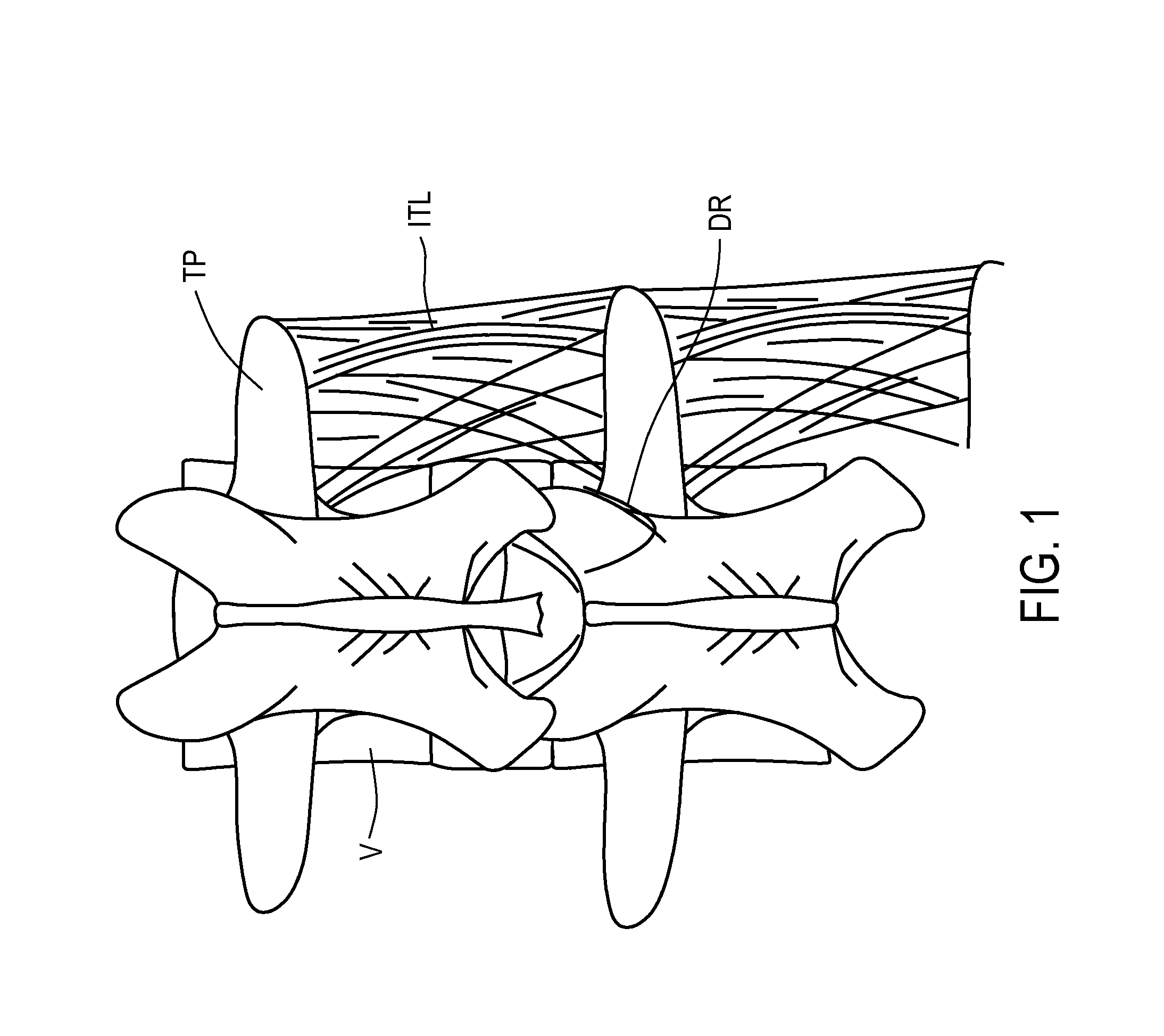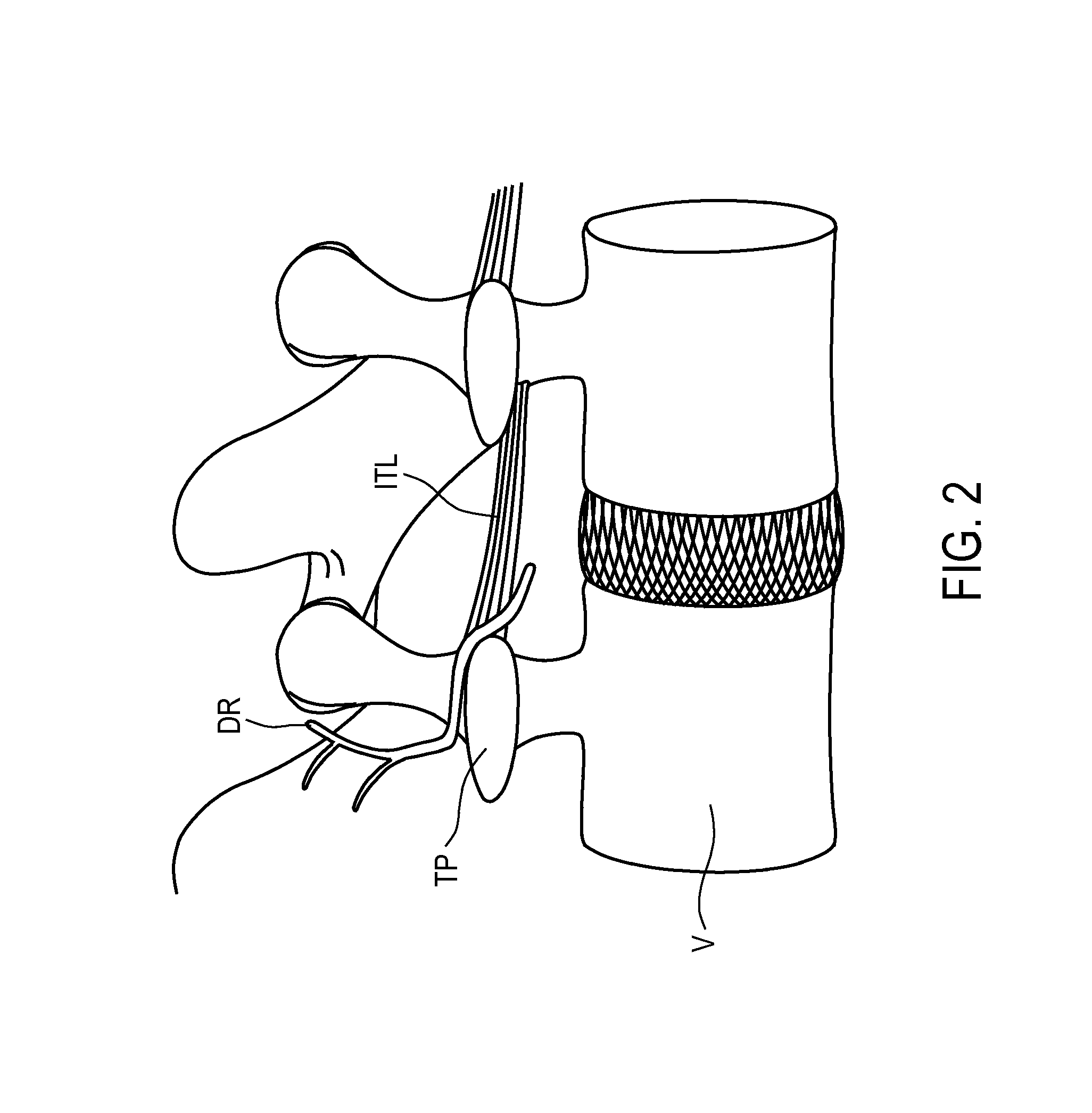Apparatus and methods for anchoring electrode leads adjacent to nervous tissue
- Summary
- Abstract
- Description
- Claims
- Application Information
AI Technical Summary
Benefits of technology
Problems solved by technology
Method used
Image
Examples
Embodiment Construction
[0039]The present invention is directed to methods and apparatus for anchoring electrode leads suitable for use with an implantable neuromuscular electrical stimulation (“NMES”) device, such as described in the above-incorporated U.S. Patent Application Publication Nos. 2008 / 0228241 to Sachs and 2011 / 0224665 to Crosby. The devices described in those applications supply electrical pulses to nerves innervating the spinal muscles, such as the multifidus muscles, and stimulate the nerves controlling those muscles to effect a therapy designed to restore neural control and rehabilitation of the muscle. The implantable stimulator is disposed subcutaneously, and is coupled to one or more electrode leads having electrodes in contact with the target muscle, or nerves innervating the target muscles, or other anatomical structures associated with the muscle, such as ligaments and tendons. The NMES stimulation supplied by the stimulator applies a pulse regime that is very different than those em...
PUM
 Login to View More
Login to View More Abstract
Description
Claims
Application Information
 Login to View More
Login to View More - R&D
- Intellectual Property
- Life Sciences
- Materials
- Tech Scout
- Unparalleled Data Quality
- Higher Quality Content
- 60% Fewer Hallucinations
Browse by: Latest US Patents, China's latest patents, Technical Efficacy Thesaurus, Application Domain, Technology Topic, Popular Technical Reports.
© 2025 PatSnap. All rights reserved.Legal|Privacy policy|Modern Slavery Act Transparency Statement|Sitemap|About US| Contact US: help@patsnap.com



